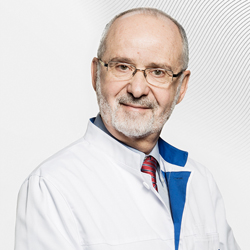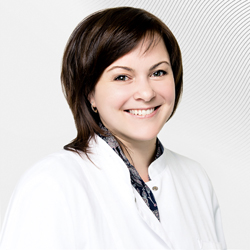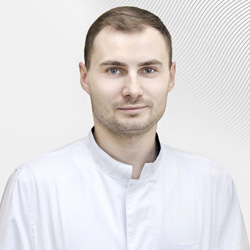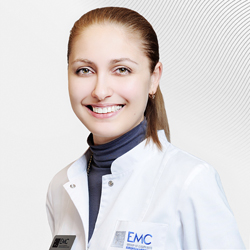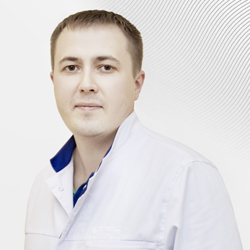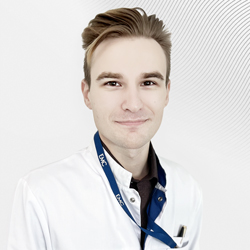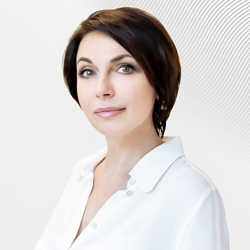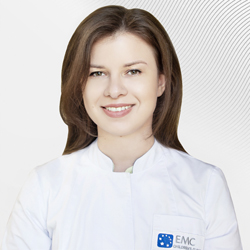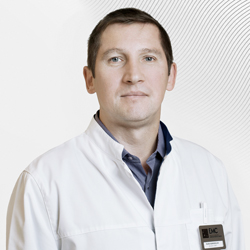Clinic addresses:
- Moscow, Prospekt Mira metro station, Shchepkina ul., 35
- Moscow, Prospekt Mira metro station, Orlovsky pereulok, 7
Computed tomography (CT) is one of the most common examinations in the world. Unlike X-rays, CT allows you to get detailed images of organs in layers. CT scan of the chest is one of the most frequently prescribed diagnostic procedures.
Indications for a CT scan of the lungs
- inflammatory diseases of the lungs and mediastinum,
- oncological diseases of the chest organs,
- determination of the stage of oncological diseases of other organs,
- chest trauma,
- assessment of congenital pathology.
Benefits of lung CT in EMC
- The EMC radiology department is equipped with the most advanced Phillips iCT 256 multislice helical CT scanner, which provides excellent image quality and significantly reduces radiation exposure to the patient. When examining the organs of the chest cavity, the load dose is reduced by up to 10 times without loss of image quality. Due to the capabilities of the equipment in the EMC, it is possible to perform a low-dose CT scan of the chest for a scheduled annual examination.
- Most studies are reviewed independently by two specialists. In particularly difficult cases, the results are discussed at a council of physicians.
- Possibility of conducting research around the clock, seven days a week.
- Departments of X-ray diagnostics in EMC clinics work under the guidance of Professor Evgeniy Libson (Israel), in the past - the head of the X-ray Diagnostics Department of one of the largest hospitals in Israel, an honorary member of King's College (Great Britain), a member of the European and North American radiological communities.
- Modern research protocols that comply with the recommendations of the American and European radiological communities ESR, RSNA.
- Maximum comfort for patients.
- Possibility of conducting research for both adults and children, including newborns.
CT scan of the lungs with intravenous contrast
Computed tomography with contrast enhancement (intravenous administration of a contrast agent) allows a detailed assessment of changes in the structure of organs and soft tissues. The use of contrast is especially important for CT of the lungs, since they are essentially an "air" organ that retains X-rays to a lesser extent than, for example, bones.
Contrast agents for computed tomography are substances containing iodine molecules in their composition, which allow the agent to actively absorb X-rays and make it “bright” on the resulting diagnostic images.
The contrast agents used for computed tomography in the EMC are low allergenic, the risk of adverse reactions during their administration is extremely low.
Computed tomography of the chest organs with intravenous contrast allows to:
- more accurately assess the anatomy of the mediastinum, the condition of the pulmonary vessels, structural changes in the mediastinum,
- visualize pathological processes in the lungs, characterize their blood supply and local distribution.
Contraindications and restrictions
Computed tomography is contraindicated during pregnancy, which is associated with radiation exposure. This limitation applies to planned studies, especially in the pelvic area. In any emergency or life-threatening situations, the need for the study will be determined by the risk to the health and life of the expectant mother and child.
There are also limitations for performing CT with contrast enhancement:
- Severe allergic reaction to a contrast agent is the only absolute contraindication for contrast-enhanced CT. In this case, it is recommended to consult with a radiologist and choose a different method of investigation.
- Allergic reactions to food, drugs, bronchial asthma. In these cases, before the study, it is necessary to carry out premedication - drug preparation for the introduction of a contrast agent.
- Diseases of the thyroid gland.
- Kidney failure. In order to determine the corresponding risks, it is necessary to take a blood test to assess the concentration of blood creatinine before the study.
- Severe diabetes (diabetic angiopathy, nephropathy, etc.).
The departments of radiation diagnostics of the EMC operate within the framework of multifunctional hospitals, therefore, if any possible complications are suspected, the decision to conduct the study, its type and methods of preparation is taken together with different specialists (nephrologist, endocrinologist, etc.).
Preparing for a CT scan of the lungs
Computed tomography of the lungs without intravenous contrast does not require any preparation.
To conduct the study with intravenous contrast, it is necessary:
- to clarify the presence of contraindications for the introduction of a contrast agent;
- elderly patients, patients with known kidney diseases, as well as patients undergoing chemotherapy, we recommend taking a blood test to determine the concentration of creatinine in the blood (assessment of the filtration capacity of the kidneys);
- if there are indications, to get drug premedication for the study;
- not to eat at least 2 hours before the study;
- if you are taking medications containing metformin (hyperglycemic agents), please tell your radiologist. You will need to stop taking them for 2 days after your intravenous contrast study.
How is the study performed
At the European Medical Center in Moscow, you can do CT scans of the lungs around the clock, on any day of the week and on holidays.
Qualified administrative staff of our center will help you choose a convenient time for signing up at, answer all your questions. Our experienced doctors and radiologists will do everything to make you feel comfortable and safe throughout the examination.
Before the examination, you will be asked to remove metal objects that fall into the scanning area. The X-ray technician will explain to you the rules of conduct during the examination, help you to sit comfortably on the tomography table. Computed tomography of the lungs is performed very quickly - no more than 15 minutes (including clothes changing and, if necessary, administering intravenous contrast), while the scanning itself is carried out in a few seconds.
Lung CT results
After the study, the obtained images are processed by a computer and get to the professional workstations of our radiologists.
Most of the studies in the department are analyzed independently by two specialists and, if necessary, can be submitted for discussion within council of physicians.
If you have data from previous surveys, you can take them with you on any storage medium (CD, flash card, electronic data uploaded to file hosting). Such information will be important for preclinical assessment of the state of internal organs and a competent assessment of the dynamics of the disease.
You can receive the results of the research both in printed and electronic form. In addition, in EMC all data is uploaded to the PACS medical electronic system, with the help of which doctors from anywhere in the world can access the results of the research within a few minutes using the link provided to them. This is especially convenient when discussing complex clinical cases with foreign colleagues as a part of the Second Opinion program.
What is the difference between CT and MRI?
This is the most common question that a radiologist can be asked.
CT and MRI are diagnostic methods. They have similarities and differences.
The similarity lies in the external resemblance of the design of the devices themselves — tomographs. There is a tunnel in their center into which a table drives.
The MRI tunnel is longer and less pleasant for people with a fear of confined spaces. However, this is not the main difference. The main thing is a completely different principle for obtaining images. CT uses X-rays, MRI uses a magnetic field.
Which of the methods is right for you is determined by your doctor, taking into account the specifics of the disease and the purpose of the study.
 Write to WhatsApp
Write to WhatsApp
